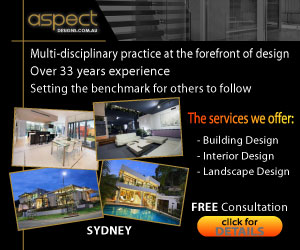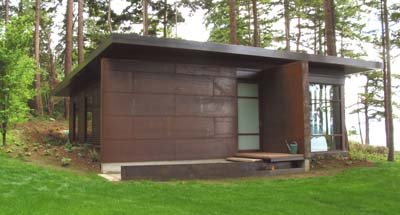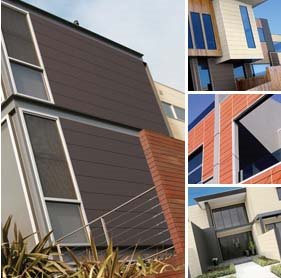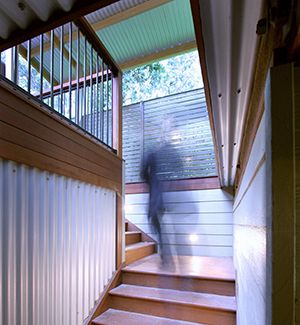
Mixture of cladding.
Image courtesy of Angela Elliss Design
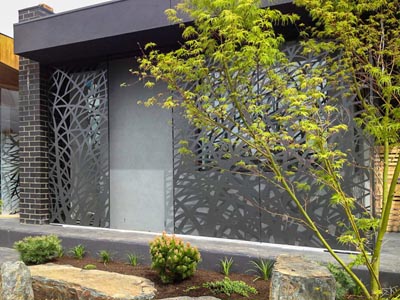
Laser-cut metal cladding.
Image courtesy of Cutout
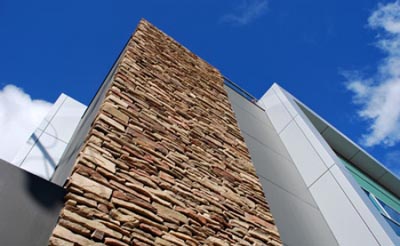
Laser cut metal cladding.
Image courtesy of MD Brick
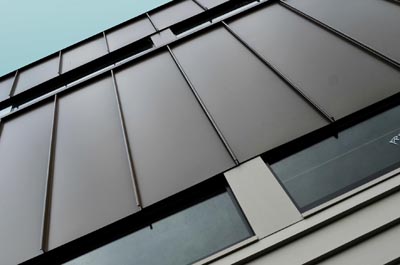
Laser cut metal cladding.
Image courtesy of Design Cladding
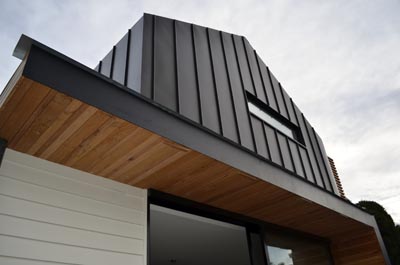
Anthra Zinc cladding.
Image courtesy of Design Cladding
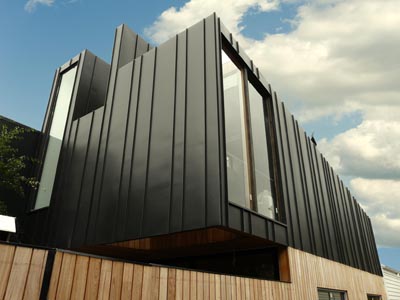
Anthra Zinc cladding.
Image courtesy of Design Cladding
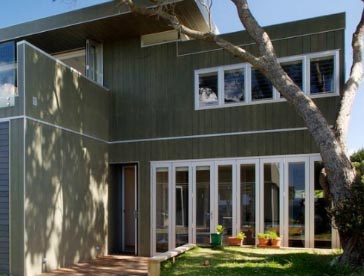
Shadow Cladding.
Image courtesy of CHH Wood Products
External wall cladding for your home may not seem like an interesting subject but brace yourself, we're gonna get 'funky'...
Cladding can be fun, modern, durable and classic; you just need to be careful in your selection and think outside traditional cladding such as; fibre cement, face brick, horizontal boards and cement render. Take a drive around a few expensive neighbourhoods and look specifically at the claddings, don't focus on anything else. You will find if you go cruising and looking at every detail on houses you won't focus enough on claddings. So when your husband says: "Oh darling look at those doors!", you say "No! We're here to look at cladding, take a picture & we'll discuss it later".
Many untraditional materials can be used as claddings, but just remember two things. 1. Your cladding needs to waterproof your home, so ensure your product can keep out water. 2. Your cladding needs to last, so ensure your material choice has a good track record with longevity.
Corrugated roof & wall cladding
Corrugated roof cladding (commonly known as Colorbond) is often used as external wall cladding. Colorbond is actually the name of the cladding paint finish not the profile shape. The Colorbond profile below (with red cladding) is called Metal Orb.
The Colorbond product (and competing products) come in varying profiles and can be manufactured to better tolerate extreme environmental conditions (if requested). Speak with your Colorbond supplier about your extreme conditions if you require cladding for homes in either beachfront or heavy industrial areas.
When used as cladding the sheets are usually laid in a horizontal format for better waterproofing (ensure 2-3 full profiles of your sheet overlap the next sheet when joining the sheets vertically). Where sheets join horizontally a timber batten can be installed between sheets and a waterproofing membrane is inserted between these. It is important to note that although rainwater does not sit on the cladding for long it is still good practice to secure the sheeting with top-hat screws (including rubber washers) on the corrugated ridges, not the troughs. This is essential in roof construction as water can sit in the troughs where water will penetrate through the screw holes in the sheeting and into your home.
Sycon - Matrix - External wall cladding
Some time ago James Hardie developed a compressed fibre cement cladding called Exo-Tech (for commercial use). Residential building designers started to specify this cladding in residential developments and it has become very popular. However the product was very heavy and many building designers were specifying the product to be installed unsealed (as raw grey patina was visually appealing) causing waterproofing problems. James Hardie has now developed a residential equivalent to Exo-Tech called Sycon - Matrix. Matrix is lighter in weight and comes pre-primed, thus solving the main problems of the Exo Tech product for residential use.
Matrix is a high density fibre cement sheet and when cut the edge is as smooth as cut-glass when compared to regular fibre cement which is brittle and rough at the cut edges. Matrix is generally installed with a 10mm shadow line joining the next sheet and is waterproofed with a recessed batten or rubber tubing behind.
The product is easily painted insitu, but it is highly recommend that the sheets receive at lease one coat of paint after they are cut to size and but before they are fixed to prevent paint being applied to the black rubber seal.
Plywood - wall sheeting
Marine grade plywood is another option for modern home cladding and comes in many finishes and profiles.
Plywood is a multi-layered timber product consisting of many layers of thin timber sheets. These wood sheets are glued together, first the timber grain in one direction then the other, forming a highly structural cladding.
Just like any timber product it requires sealing with a paint or stain and will require recoating about every two years. If not maintained correctly the plywood will delaminate (de-layer). "Shadowclad" is a plywood product with grooves at around 180mm centres and is manufactured by Colter Holt Harvey
Fixing can be secured with hat-screws with rubber washers or regular fixing screws. Sheet joins require a rubber seal similar to the Matrix product or by secret nailing and regular nailing methods.
Metal
Weathered Steel - Rusted wall cladding
Weathered steel is a beautiful product and goes by many proprietary names such as Cor-Ten. When used correctly and in conjunction with products such as sandstone and timber the affect can be stunning.
Weather steel has a visually striking rusted steel patina and you need to be aware that weathering and staining of other closely located products may occur.
In relatively dry conditions this product only rusts to a depth of around 4mm, and then stops (stabilises). This occurs due to the rust acting as a sealing barrier between the steel and oxygen in the air, which causes rusting, but there is always an exception to the rule. In areas of high humidity and salt, water front locations for example, the rusting of the weathered steel will not stabilise completely and may continue to rust, forming holes in the cladding. See Wikipedia article here about Weathered steel.
Laser cut
A new cladding to the market is laser cut steel. You can use any type of metal sheet. Decorative laser cut steel is not so commonly used in the mass housing market but is becoming very popular in high end architectural homes. The laser cut product is generally used to cover plain claddings, offering something very unique that you can design yourself.
Zinc
Zinc cladding offers a very modern look and is popular in high-end architectural homes.
Stone
Stone cladding is now well entrenched in the mass Australian housing market. There are two options - 1. Natural stone - Often the stone comes in a pre-glued system. Natural stone also keeps its colour and does not fade. It is generally more expensive but will look great for decades. 2. Manufactured stone - This stone is generally made of concrete or a combination of stone and concrete and can fade.
Note: If you plan to install stone cladding around a corner of your building, ensure that you view the corner samples as well as the straight pieces before purchase. Many stone cladding products do not have a dedicated corner stone type and the straight pieces do not usually look good applied around corners. Also don't purchase stone over the internet unless you have used the product before. It is difficult to see the detail of stone via a computer screen.
Terracotta
Relatively new to the Australian residential market are terracotta cladding products. Terracade for example is a very large terracotta wall tile that fits onto a channel system. This is then secured to a timber or steel stud wall and only requires a final seal. There are seven colours to choose from and they are virtually maintence free and classic in style.
So you see...?? Why be boring with your cladding when Australia has so many modern and classic options to choose from.
Sponsors
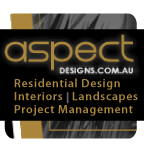
|
Aspect Designs are a multi-disciplined, award winning, Sydney based business who specialise in architecture, interior design, drafting and landscape design. |

